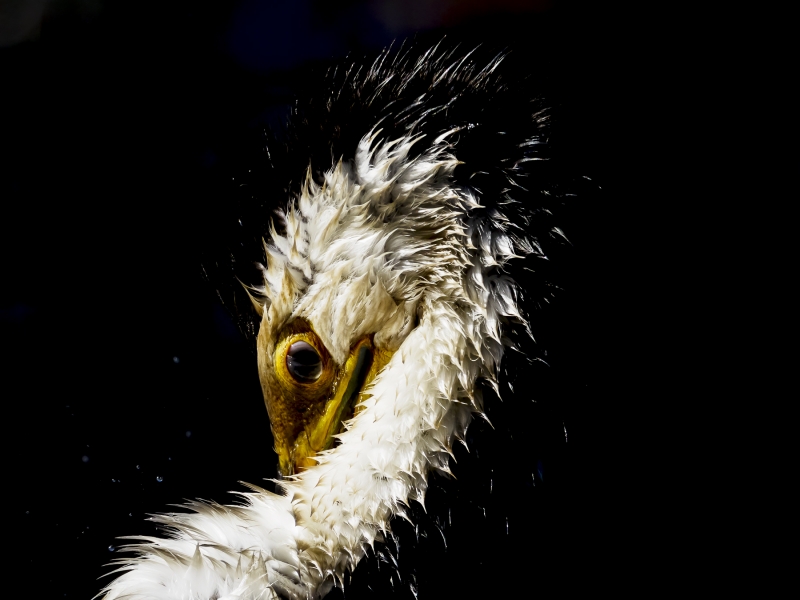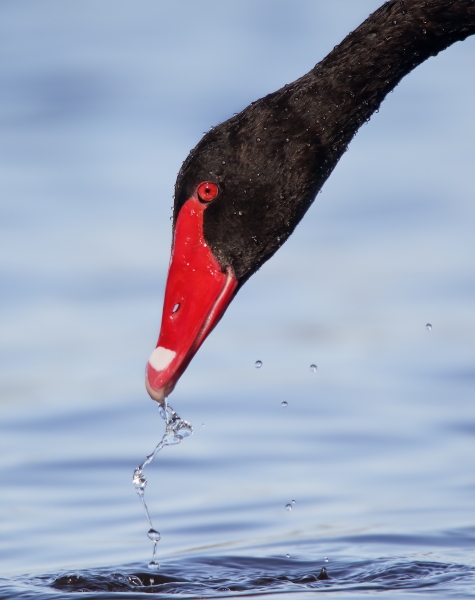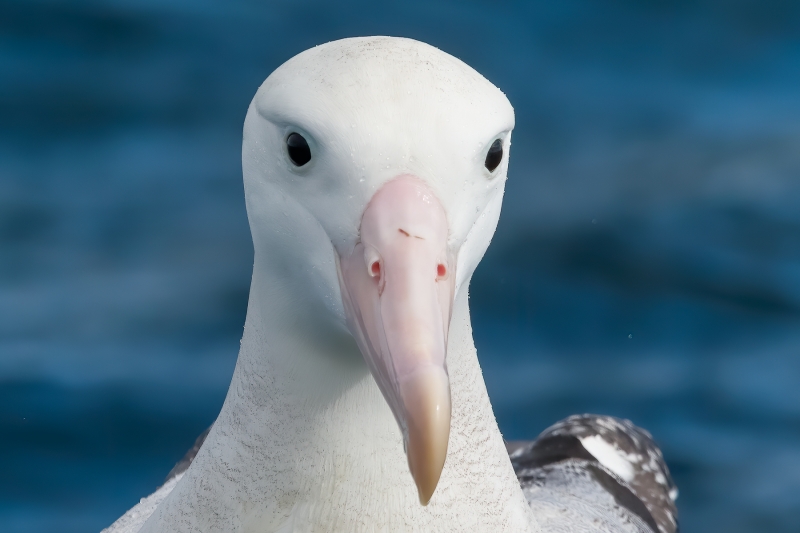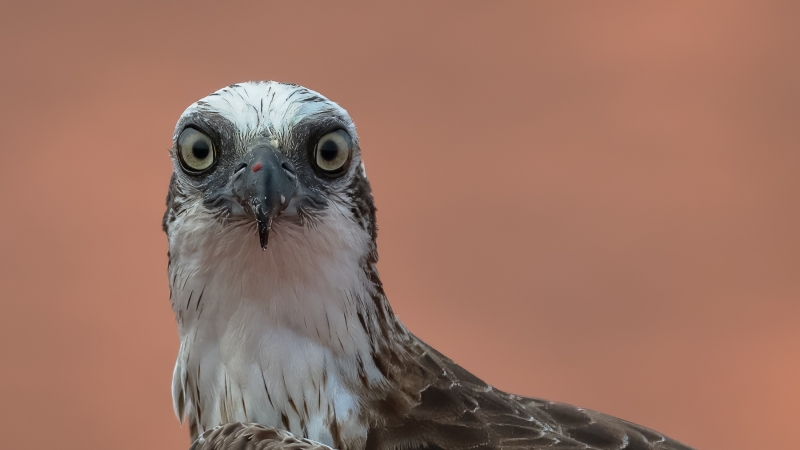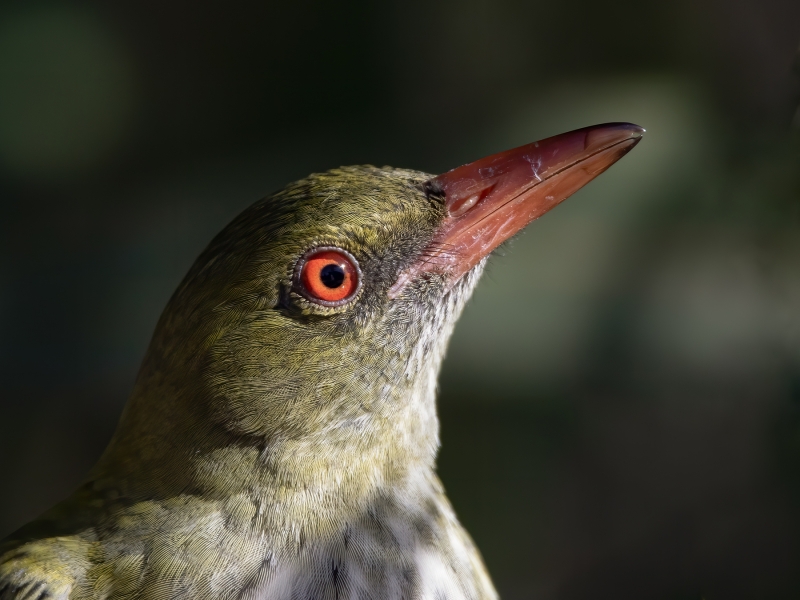We received about 170 entries in the Intermediate level of the Head and Bill competition, the largest number of the three categories. It’s great to see this level of participation by members, and it gives me lots of quality images from which to choose.
A Head and Bill competition, by definition, is going to be limited to a relatively small part of the bird, which presents unique challenges to the photographer. It is inevitable that photos start to look the same, in terms of presentation and style so, for me, the key challenge is for the photographer to make the photo really stand out from the crowd.
First, photographing the head and bill involves an intimate involvement with the bird. An important aspect of this is getting in close. While modern high megapixel cameras allow a lot of cropping, excessive cropping of what was originally intended as a shot of the whole bird often doesn’t work, because the original purpose of the shots are different. To get the best images of the head and bill, generally you will need to set out to capture these features. In some entries it was evident that rather than shooting to depict the head and bill, the photographer had shot the bird in a different context and simply cropped, often excessively.
Second, technical aspects are important. Attention to detail is important in all photos, but none more so than in close up, intimate shots. I would expect to see a precisely focused eye, and tons of crisp, expertly sharpened detail in the feathers, bill and skin. Depth of field needs to be appropriate for the subject, and things like colour, contrast and highlights also need to be well managed. Images should be noise-free. It will be much more difficult to control these aspects if the image is heavily cropped.
Beyond these aspects, it helps if the photo has something extra. A photo can be pin sharp, and expertly shot and processed, but just lack that little bit of impact that might come from a misplaced feather, a strategically placed drop of water, a beak full of prey, or a whole lot of attitude.
For me, the following photos rose to the top of the pile in the Intermediate category.
Winner: Little Pied Cormorant, by Steven Roe (Image ID 41735)
I expect that nominating this image as the winner might be a little controversial, because of the way it has been presented. The high contrast effect means that the whites are a little ‘blown’ and the blacks are very dense, but I think the overall effect makes for a strong image. The eye in the middle of the yellowish face skin forms a central focal point of the image, around which the ‘question-mark’ shape of the white feathers curves down to the bottom of the image. The bright highlights and water drops standing out from the black background add an extra touch of interest.
Highly Commended: Black Swan, by Nathan Watson (Image ID 41009)
This image makes excellent use of the space in the frame with the bird’s head angling down from the top right, using a classic rule of thirds composition following the line of water drops down to the bottom of the image. It captures the essence of the bird’s relationship with the water that it lives on, with the zigzag of the trickle from the bird’s beak, and the spangle of water drops on its head and neck, and hanging in the air. The eye seems to be engaging directly with the photographer, and the simple black, blue and red colour palette is eye catching.
Highly Commended: Southern Royal Albatross, by Chris Young (Image ID 41820)
This image makes use of a tonal palette which reflects the bird’s environment, being predominantly cool blues and white, and a slightly cool white balance. The handling of exposure is good with the retention of lots of detail in the white feathers of the bird. There is a lovely sparkle of water drops particularly at the base of the bill, and dark clear eyes that hold one’s attention. The delicate pink of the bill has also been well captured and provides a nice warm contrast.
Commended: Australian Brush Turkey, by Chris Young (Image ID 41405)
A strong image which really captures the details of the facial skin and feathers. I find the warm tones of this image appealing, with the red and yellow of the bird complementing the unfocused brownish tones of the de-focused background. Lots of interesting structure in the feathers and skin, down to the blemishes/dirt on the sides of the beak. Good positioning of the bird in the frame.
Commended: Emu, by Barry Deacon (Image ID 41473)
Another engaging image full of warm tones and interesting detail in the feathers and skin of the bird. Every bit of the bird seems very sharp. I find the bird’s ‘mohawk’ (or is a mullet) appealing, and there is a nice catchlight in the eye.
Commended: Green Rosella, by Chris Young (Image ID 40457)
A well-executed side-on portrait which makes excellent use of the colours of the bird’s head. The detail is crisp and clear, and the highlight is the flow of red, yellow, blue and the pale whitish beak, with a reflection in the eye, and iris details visible. A good ‘general’ portrait in which no one thing stands out, but the whole is very pleasing.
Commended: Pacific Black Duck, by Michiko Iida (Image ID 41164)
It is easy to dismiss yet another image of a very common bird, but this one has a little bit extra due to the colourful green and pinkish weeds, including the catchlights of the water drops, and the way the beak of the bird is partially covered. There is also good use of depth of field in the background and foreground, and the eye is well positioned looking into the frame.
Commended: Osprey, by Chris Young (Image ID 41417)
The eyes have it! A very interesting take on this bird, with a direct face-on view meaning the focal point of the image are the piercing eyes. There is good use of depth of field around the head, with everything sharp from the tip of the beak backwards. Some of the details in the white feathers, particularly on the crown, seem to have been smoothed over, but overall the image is quite engaging.
Commended: Little Corella, by John Eley (Image ID 41141)
While it’s not technically perfect, I was immediately drawn to this image. I think it’s the combination of the shapes in the image (with the erect crest of the bird, the contrasting colours of the eye and bill, the delicate shades in the whites, and the ‘negative space’ around the bird from the square frame). As the photographer points out there is good engagement and eye contact with the bird. Minor negatives are the fringe of blown highlights at the back of the head, and the speckling of noise in the background - the noise, in particular, could have been easily dealt with.
Commended: Olive-backed Oriole, by Mary Wheeler (Image ID 41630)
As the photographer points out in the comments, this image makes interesting use of the light. The focal points are the eye, with a nice catchlight, and the interesting and detailed red beak (which has been highlighted by the placement of a light patch of background behind it). The bird is nicely picked out from the dark background, and has an alert posture, with the curve of the chin and beak rising up to the top right hand corner.







